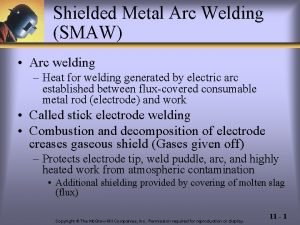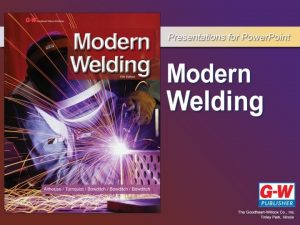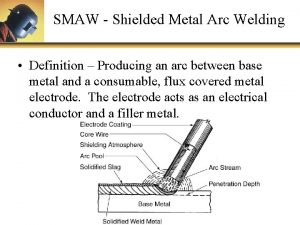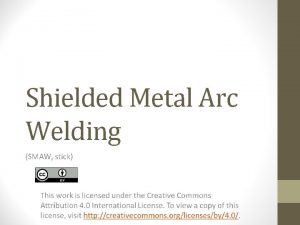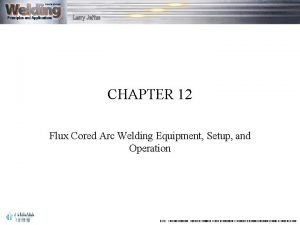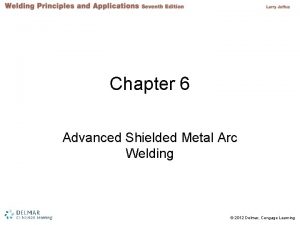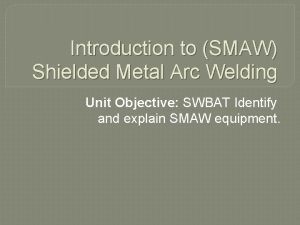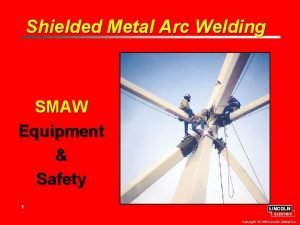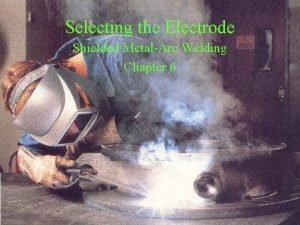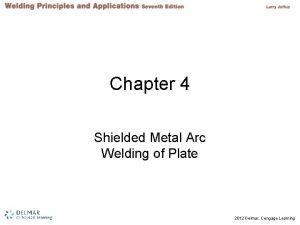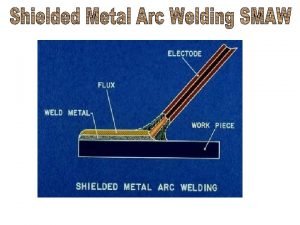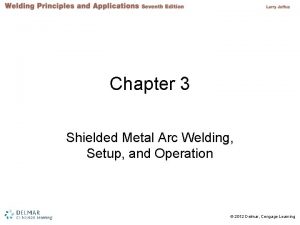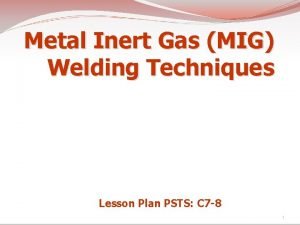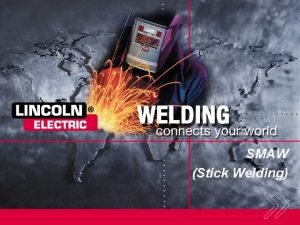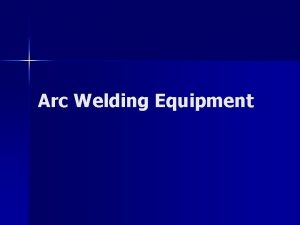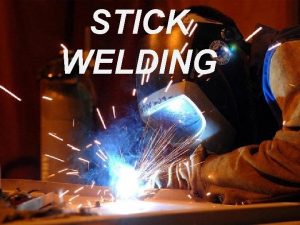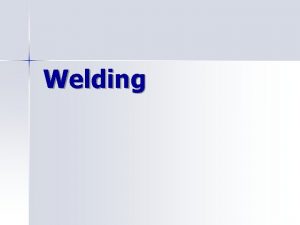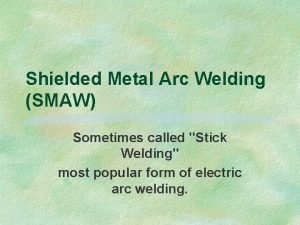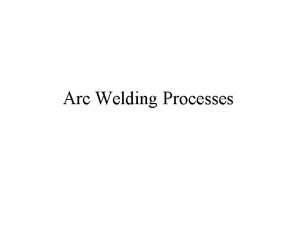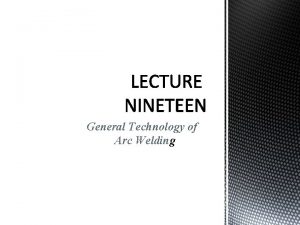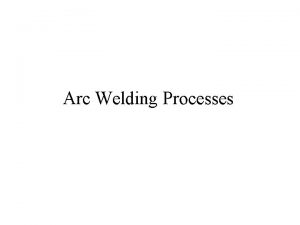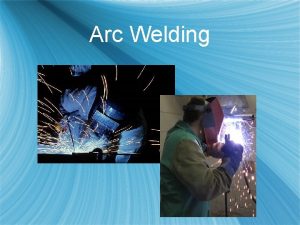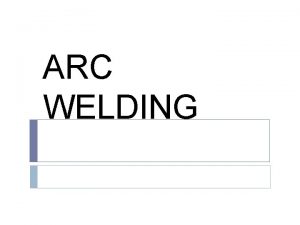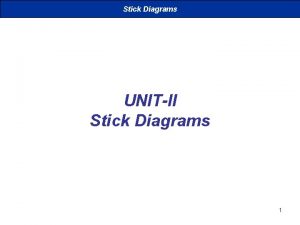Manual Metal Arc Stick Welding 1 Manual Metal


















- Slides: 18

Manual Metal Arc (Stick) Welding 1

Manual Metal Arc Welding n n Heat Source provided by Electric Arc between the metal and the flux coated electrode. (5500 degrees Celsius and greater) An electric arc is a discharge of electrical current across a gap in a circuit. 2

Manual Metal Arc Welding n n The electrode rod is held in an electrode holder. Attaching a clamp onto the work piece completes the circuit. In most arc welding processes a consumable filler electrode rod is used to increase the volume and strength of the weld joint. 3

4

Maintaining the Arc n n n Movement of the electrode relative to the work piece is accomplished by a human operator (manual welding) or by mechanical means (i. e. machine welding). The quality of manual arc welding depends on the skill of the operator. The Electrode must be moved along the weld run and also towards the weld pool to maintain the arc length. 5

Features of M. M. A. Welding n n n Flux Covering produces CO 2 gas protecting the weld area from atmospheric contamination during the welding process. A slag remains after the welding process which must be chipped off afterwards. The electrode core acts as a filler material. (Consumable) 6

Power Supplies n MMA can be done with AC or DC power supplies. n D. C. associated with site work. (Generator) n Safer in damp conditions. n Safer in confined spaces. 7

Use of the Transformer n n Mains A. C. supply not suitable for welding purposes. Mains A. C. provides high voltage and low amperage. Welding requires low voltage and high amperage. This change is achieved using a transformer. 8

Why change the Amperage? n n n The Amperage (Current) is changed with the varying diameters of electrodes. Suggested Amperage is found on the side of a box of electrodes. 2 mm electrode = 40 to 65 Amps 4 mm electrode = 140 to 180 Amps 6 mm electrode = 220 to 300 Amps 9

Power Supplies Continued n A Rectifier must be used along with A. C. power supplies to convert the current to D. C. 10

The Transformer

Variable Transformer

transformer: n n n A step-down transformer is used to change the mains voltage from 220 V to a suitable level (80 -100 V) for welding. This will provide the high current needed for welding. This type of transformer has more turns on the primary coil than the secondary coil and will induce alternating current (AC) at a lower voltage. 13

The Rectifier

rectifier: n n The rectifier changes alternating current (AC) to direct current (DC). It consists of four diodes which allows two of the diodes to conduct on each half-cycle of the AC supply. 15

capacitor: n The capacitor is employed to provide a smooth supply of low voltage DC. 16

Transformer circuit: A step-down transformer is used to change the mains voltage from 220 V to a suitable level (80100 V) for welding. This will provide the high current needed for welding. This type of transformer has more turns on the primary coil than the secondary coil and will induce alternating current (AC) at a lower voltage. 17

Transformer circuit: The rectifier changes alternating current (AC) to direct current (DC). It consists of four diodes which allows two of the diodes to conduct on each half-cycle of the AC supply. The capacitor is employed to provide a smooth supply of low voltage DC. 18
 What is arc length in welding
What is arc length in welding Welding chapter 3
Welding chapter 3 Lesson 6b shielded metal arc welding fundamentals
Lesson 6b shielded metal arc welding fundamentals Smaw welding meaning
Smaw welding meaning Shielded metal arc welding definition
Shielded metal arc welding definition Chapter 12 flux cored arc welding
Chapter 12 flux cored arc welding Chapter 6 shielded metal arc welding
Chapter 6 shielded metal arc welding Smaw introduction
Smaw introduction Smaw safety
Smaw safety Beads and fillet welds
Beads and fillet welds Fill freeze electrode examples
Fill freeze electrode examples Chapter 4 shielded metal arc welding of plate
Chapter 4 shielded metal arc welding of plate Smaw welding
Smaw welding Chapter 3 shielded metal arc welding
Chapter 3 shielded metal arc welding The welding process by metal inert-gas (mig) welding is
The welding process by metal inert-gas (mig) welding is Stick welding troubleshooting
Stick welding troubleshooting Arc promoteur vs arc investigateur
Arc promoteur vs arc investigateur Minor arc and major arc
Minor arc and major arc Major arc of a circle
Major arc of a circle
